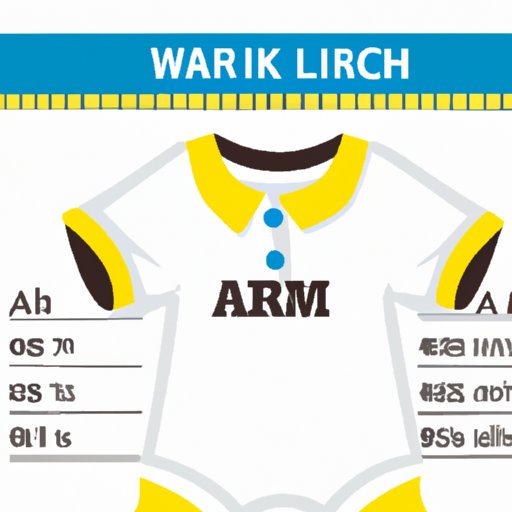Introduction
When it comes to buying clothes for children, it can be challenging to find the right size and fit. Sizing is particularly important for growing children, and parents often struggle to keep up with changing measurements and styles. Understanding youth size small can be especially confusing for parents, as it falls between toddler sizes and adult sizes. In this article, we’ll explore the specifics of youth size small, what it means, and why it’s important for clothing shoppers to understand.
Understanding Youth Size Small: A Guide for Clothing Shoppers
Youth size small is typically used for children between the ages of 6 and 8, though this can vary depending on the child’s measurements. It’s important to note that youth sizes are different from adult sizes, as they take into account the proportions and needs of growing children. Youth sizes often feature smaller arm and leg openings, wider necklines, and more room in the waist and hips.
Finding the right size in youth clothing can be challenging, as sizes can vary widely between brands and styles. One important factor to consider is the child’s height and weight, as these measurements can help to determine the right size range. It’s also important to pay attention to size charts and product descriptions, which can provide specific information on fit and sizing.
The Measurement Breakdown of Youth Small Clothing: Why It Matters for Parents
The specific measurements used to determine youth size small clothing can vary from brand to brand. However, some general guidelines include a chest measurement of 24 to 26 inches, a waist measurement of 22 to 23 inches, and a height of 48 to 52 inches.
It’s important for parents to understand these measurements when shopping for their children, as choosing the wrong size can lead to discomfort and discontent with clothing. To ensure accurate measurements, parents can take their child’s measurements at home using a soft tape measure, or consult sizing charts provided by the brand or retailer.
Sizing Dilemmas Solved: Youth Small vs. Kids Small
Youth size small is often confused with kids small or other sizes commonly used for children’s clothing. While these sizes may seem similar, there are important differences to consider. Kids small clothing is typically meant for children between the ages of 4 and 6, and may feature tighter proportions and smaller measurements than youth size small clothing.
When choosing between youth size small and kids small, it’s important to consider the individual needs and measurements of the child in question. While youth size small may be a good fit for some children, others may benefit from smaller or larger sizes depending on their size and age.
Kids Grow Fast, So What Exactly is Youth Size Small?
Growing children can be a challenge for clothing shoppers, as it can be difficult to predict how quickly a child will grow and change size. Youth size small can be a good option for children who have outgrown toddler sizes but are not yet ready for adult sizes, as it offers a range of measurements specifically designed for growing kids.
When choosing youth size small clothing, it’s important to consider the child’s growth rate and choose items that will allow for some room to grow. This can help to extend the life of clothing and save money in the long run. Additionally, parents can opt for adjustable items like elastic waistbands or adjustable straps, which can adapt to changes in size over time.
The Ultimate Guide to Youth Size Small: A Closer Look at the Measurements
To better understand youth size small, it’s helpful to look at the specific measurements that go into defining this size range. These measurements can include chest, waist, hip, inseam, and sleeve length. However, these measurements can vary depending on the brand and style of clothing, so it’s important to consult sizing charts carefully.
When shopping for youth size small clothing from international or online retailers, it can be especially challenging to adjust to different sizing standards. To make the process easier, it’s helpful to take accurate measurements at home and compare these to the sizing charts provided by the retailer. Additionally, many retailers offer guidance on converting between sizing standards, which can make it easier to find the right size.
Conclusion
Understanding youth size small is an important part of successful clothing shopping for growing children. By taking the time to understand specific measurements, consider the child’s growth rate, and choose items that will allow for some room to grow, parents can make better choices when it comes to sizing and clothing fit. With these tips and tools, shopping for youth size small clothing can be a stress-free experience for both parents and children.
